Two quotes from the leaders of the May 25 Wildtending Walk at Verbena Fields in Chico are pertinent here. Toward the end of the walk Ali Meders-Knight, Traditional Ecological Knowledge (TEK) Specialist for the Mechoopda Tribe, said “The more we understand this place together, the better off we'll be.” And Raphael DiGenova, plant propagator extraordinaire, echoed that sentiment, noting that “this knowledge is not everywhere.”
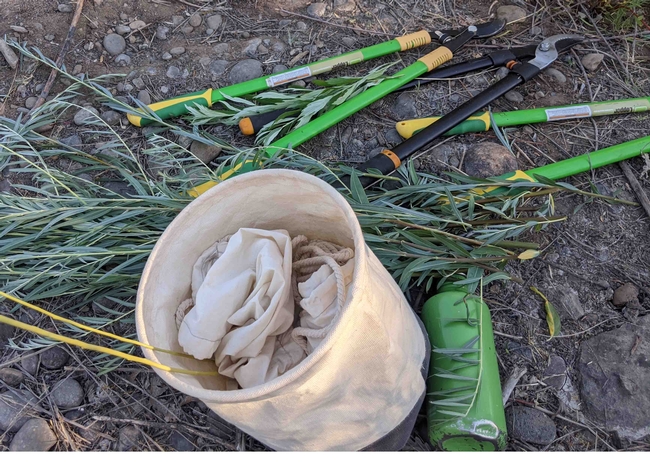
The health and welfare of flora and fauna (including human beings) are intricately tied to one another. They all have evolved with, adapted to, and been acted upon by geology, topography, and climate. This is why reviving traditional knowledge and ancient, proven technologies for living within our means and in partnership with our ecosystem is of utmost importance.
For example, a healthy natural landscape can store and protect water by employing three plant “stories:” an understory, a middle story, and an overstory. Riparian systems in particular have evolved this strategy to utilize and protect surface and groundwater systems. In our Mediterranean climate with its long, hot, dry summers, and especially in periods of drought like the one we are experiencing now, the ability to protect and preserve water resources is crucial.
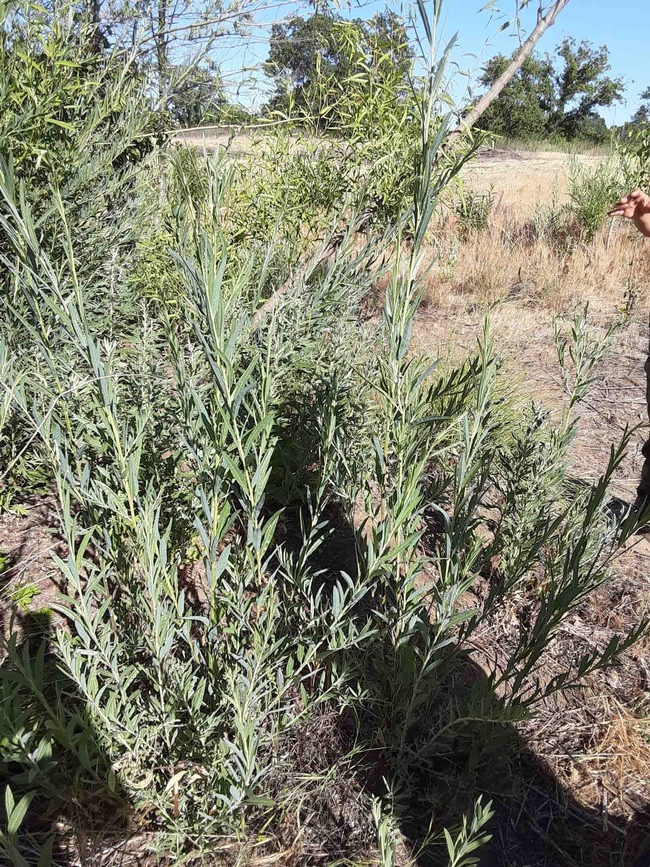
Individual bunches of deer grass grow in groups within the swale in the central part of the park, as well as in the channel alongside the willows. It is deer grass seed collection time. On the grasses which were cut down to nubs while dormant last winter, new seed stalks are standing tall. Those grasses are green, symmetrical, and healthy. The grasses left unshorn are dry and rangy, and less able to propagate through seeding. This is a textbook example of how indigenous peoples influenced their environment to maintain its vitality. (Traditionally, fire would have been used to prune the grasses: an ongoing dialogue with City Planners could make this an option in the future.)
DiGenova has saved poppy hulls from the seeds the group harvested last month, and spreads them at the base of a baby blue oak. An acorn they seeded here last fall sprouted about a month ago. The light-colored hulls make an ideal mulch, protecting the ground beneath the seedling and helping to retain any moisture. The light color of this mulch will deflect some of the sun's heat.
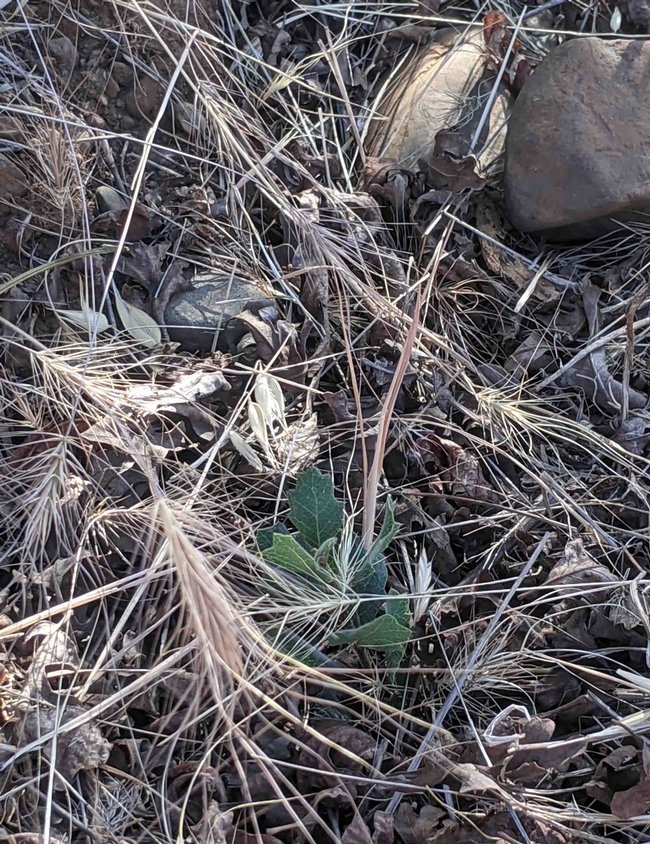
Meders-Knight observes that prior to European's arrival, our region was populated by climate adapted plants. Today Verbena Fields is surrounded by their unnatural opposites: a golf course, watered lawns, coastal conifers, landscape plants native to rainy England, and large swaths of thirsty agricultural monocrops.
A plant that occurs naturally in this ecosystem is the datura. The sphinx moth feeds at night on the nectar of its blooms, but its deadliness to humans is belied by the beauty of its trumpet shaped white flower that opens with the moonlight. This is an extremely powerful plant: each seed pod contains hundreds of poisonous seeds: ingesting two can cause death, one will make you regret you tried it. Its hallucinogenic properties are frightening and dangerous; this is not a playful, enlightening trip. Don't even handle the leaves of this plant, as prolonged contact could cause harm.
Traditionally, datura is used in ceremony to deepen understanding of the entire ecosystem and only those with training and knowledge – “gatekeepers” – may do so safely. Its use must be accompanied by certain songs, ancient knowledge, and the right rhythm and mindset.
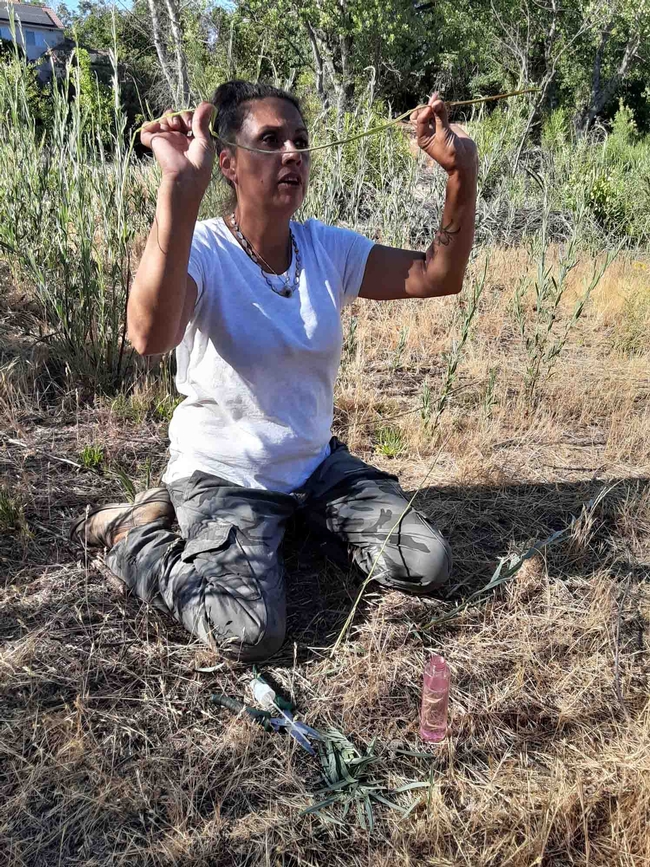
Willow bark, leaves, and stems have healing properties. All species of willow contain salicin, from which salicylic acid (and aspirin) is derived. Bark stripped from the stem is cool and refreshing – wrapped around the forehead it can soothe heat stroke. Water infused with torn leaves and chopped stems can be used as a face wash, to counteract acne, and as a rooting hormone.
She and DiGenova also talk about the long arc of experience the Mechoopda people have in flood control and drought. The channel we are sitting in was carved by what was once a year-round stream, home to fish and turtles, and along its banks stood a village. It is now being actively managed by the Wildtenders to maintain the three storied system, as well as ensuring the plant age diversity that contributes to woodland health. Willow branches cut last fall and piled in the streambed are mimicking beaver dams.
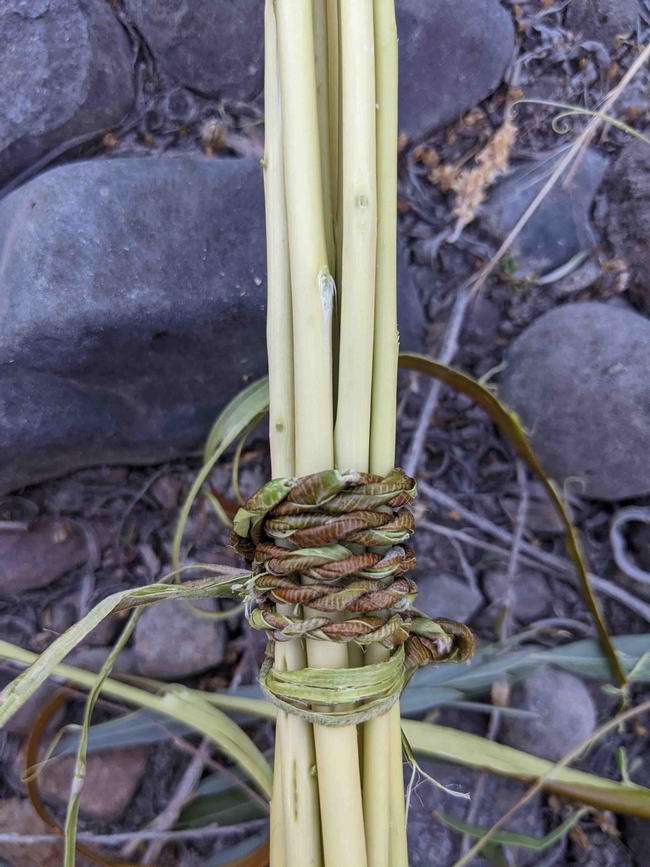
There are three ways you can get involved and learn more about this special place, native species, and the Mechoopda culture: 1) Join the Wildtending Walks the last Tuesday of the month. There is a suggested $5 donation to support the facilitators; 2) Meet up with the volunteer crew at Verbena Fields every Friday between 10am and 1pm to pull invasives, water seedlings, and more; and 3) Become certified in native plants through Meders-Knight's TEK training workshops.
UC Master Gardeners of Butte County are part of the University of California Cooperative Extension (UCCE) system. To learn more about us and our upcoming events, and for help with gardening in our area, visit our website. If you have a gardening question or problem, email the Hotline at mgbutte@ucanr.edu (preferred) or call (530) 538-7201.